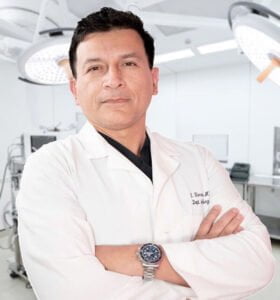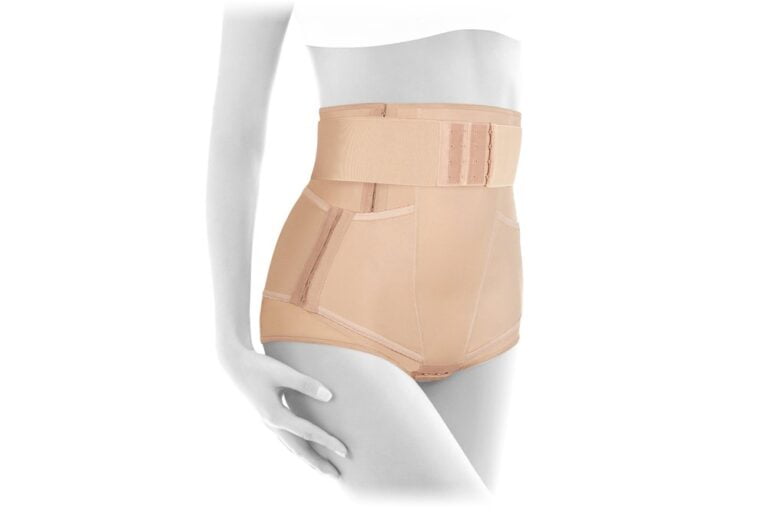Which Tummy Tuck Is Right for You? A Comprehensive Guide
Do you have a lot of excess skin around your midsection? Are you unhappy with the appearance of your stomach? If so, you may be considering a tummy tuck. There are two types of tummy tucks: mini and full tummy tucks. So, which is best for you? This comprehensive guide will explain the differences between these two procedures and help you decide which is best for you.
How Do Tummy Tucks Work?
A tummy tuck is a standard cosmetic surgery operation that can result in a smoother, firmer stomach. An incision in the lower abdomen is made, and extra skin and fat are removed. The remaining skin is then tightened and sutured in place. In some cases, the abdominal muscles may be strengthened during the treatment.
Tummy tucks are typically used with other cosmetic procedures like liposuction or breast augmentation. This can aid in the creation of a more balanced and proportionate appearance.
The mini tummy tuck, also known as partial abdominoplasty, is a less invasive surgical surgery that can improve the abdomen’s appearance. It only removes a little bit of skin and fat around the belly button and does not remove loose skin or stretch marks beneath it.
A full tummy tuck, also referred to as an abdominoplasty, is a more invasive surgical procedure that can alter the abdomen’s appearance as it tightens abdominal muscles that have been strained or split during pregnancy, as well as addresses loose skin and stretch marks below the belly button.
Mini Tummy Tuck vs. Full Tummy Tuck Comparison
Candidates
Full tummy tucks are often recommended for women who have had several pregnancies since the treatment can tighten the skin and muscles of the lower and upper abdomen. It is also an option for men and women who have undergone massive weight loss, as it can help to address loose skin and tissue in the upper and lower abdomen.
In contrast, mini tummy tucks are typically best for women who have had one or two pregnancies, as they can address loose skin and tissue in the lower abdomen without needing more invasive surgery. They are also an option for men and women who have undergone less dramatic weight loss.
Incision and Scars
Full tummy tucks always necessitate an incision around the navel and a long incision along the lower abdomen. The incision length will be determined by the amount of skin and fat that needs to be removed. In certain circumstances, it might stretch from hipbone to hipbone.
On the other hand, mini tummy tucks usually only require a minor incision around the navel. The incision is typically shorter than that of a full tummy tuck.
The type of incision you have will also determine the kind of scars you’ll be left with. Full tummy tucks will result in longer scars, while mini tummy tucks usually only leave a small scar around the navel. However, you can help minimize the appearance of scars by following your surgeon’s instructions for scar care and using silicone gel sheets.
Recovery Time
The average mini tummy tuck recovery time is about two to four weeks. This implies you should take it easy for the first week or two before gradually returning to your normal activities. You should refrain from intense activities and heavy lifting for at least six weeks.
A full tummy tuck recovery is a little more complicated. You can expect to take four to six weeks off from work and your usual activities. You’ll also need to avoid strenuous activity and lifting anything heavy for at least six weeks. It may be several months before you feel like your old self again.
Risks and Side Effects
A tummy tuck has some risks and side effects, just like any other procedure. These include:
Bleeding: The chances of bleeding are low in a mini tummy tuck because of the small incision but higher in a full tummy tuck due to the huge incision. People who have a history of bleeding disorders or are on blood thinners are also more likely to bleed.
Infection: Both procedures have a low risk of infection. However, people with diabetes or a weaker immune system are at a higher risk of infection.
Blood clot: Blood clots can form in the legs or lungs after surgery. This is a severe consequence, but both procedures have a minimal risk of occurring. However, obese people, people with a history of blood clots, and smokers are at a higher risk.
Pain and discomfort: Pain and discomfort are usually mild with partial abdominoplasty and can be treated with over-the-counter medicines. They are typically more severe in the case of a full tummy tuck and may necessitate prescription medication.
Numbness or loss of sensation in the treated area: Because the nerves in the treated area are cut during surgery, numbness or loss of sensation is likely. For a mini tummy tuck, it is usually temporary and resolves within a few months, while for an abdominoplasty, it may be permanent and require additional surgery.
Swelling and bruises: These are common following surgery and usually resolve within a few weeks. However, swelling may be more pronounced after a mini tummy tuck because of the tiny incision.
Poor wound healing: If the incision is not adequately cared for or the wound becomes infected, it may not heal properly. Because the incision is small, this is usually not an issue with partial abdominoplasty. However, there is a considerable risk in a full tummy tuck, which can cause severe problems.
Skin discoloration: The skin around the incision may become discolored due to bruising. This usually is transitory for partial abdominoplasty and will disappear within a few weeks, whereas it may be permanent for an abdominoplasty.
Ideal Results
Patients with good skin elasticity, relatively localized fat, and loose skin can benefit significantly from a mini stomach tuck. It can help improve the curves of the lower abdomen and offer patients a flatter, more toned appearance.
On the other hand, an abdominoplasty can produce even more dramatic results by improving the curves of both the upper and lower abdomen. It can give patients a flatter, more toned appearance and can also help to improve the function of the abdominal muscles. It is ideal for patients with more diffuse areas of fat and looseness or who have poor skin elasticity.
Cost
A mini tummy tuck costs around $5,000, while a full tummy tuck costs approximately $10,000. The cost depends on factors such as the surgeon’s costs, facility expenses, and anesthetic fees.
Mini Tuck vs. Full Tummy Tuck – Which Should I Choose?
It all relies on your goals and what you are ready to go through to attain them. Partial abdominoplasty may be ideal if you want to focus on tightening the skin and muscles around your belly button with little scars and recovery time.
However, a full tummy tuck may be suitable if you wish to repair loose skin and stretch marks below your belly button.
Whatever you pick, consult with a board-certified plastic surgeon to ensure you’re making the best decision for your body.








